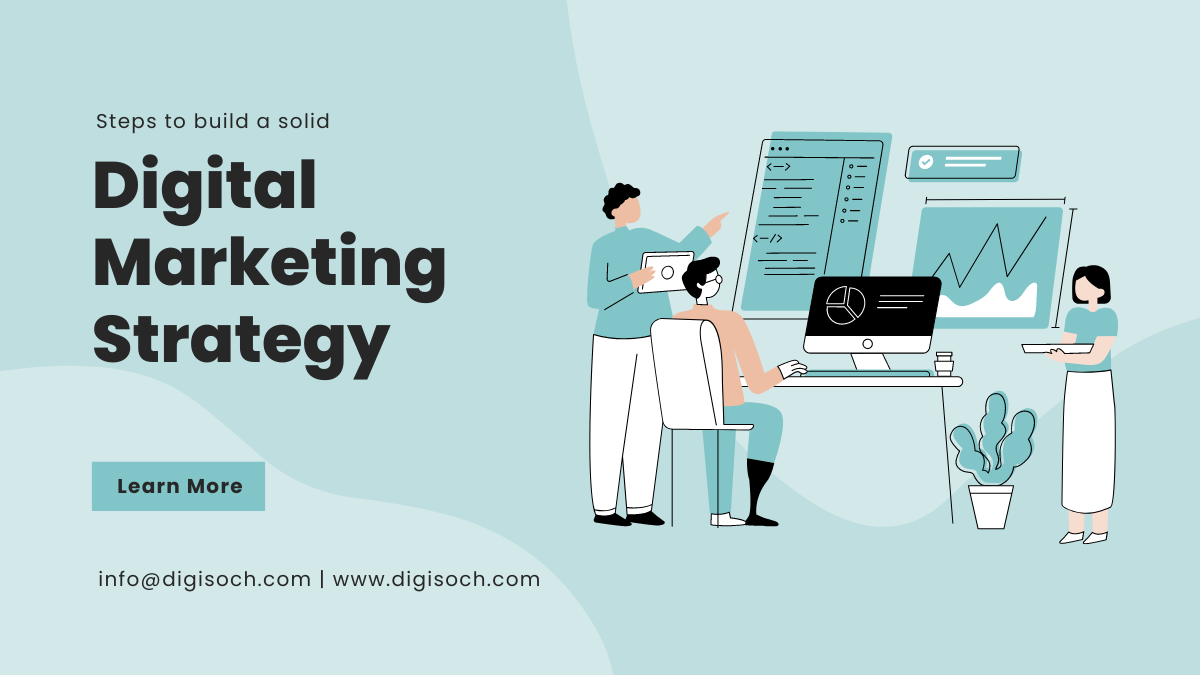Building a solid digital marketing strategy involves several key steps. Here’s a general framework to guide you through the process:
- Set Clear Goals: Define your objectives and what you aim to achieve through digital marketing. Your goals could include increasing brand awareness, driving website traffic, generating leads, boosting sales, or improving customer engagement. Ensure your goals are specific, measurable, attainable, relevant, and time-bound (SMART).
- Know Your Target Audience: Identify your target audience or buyer personas. Understand their demographics, interests, behaviors, and pain points. This information will help you tailor your messaging and choose the right digital marketing channels to reach and engage with your audience effectively.
- Conduct a Competitive Analysis: Research and analyze your competitors’ digital marketing strategies. Identify their strengths, weaknesses, and unique selling propositions. This analysis will help you differentiate yourself and uncover opportunities to outperform your competitors.
- Select Relevant Digital Marketing Channels: Based on your target audience and goals, choose the digital marketing channels that align with your objectives. This could include search engine optimization (SEO), social media marketing, email marketing, content marketing, pay-per-click (PPC) advertising, influencer marketing, or a combination of channels. Ensure your channel selection matches your audience preferences and behavior.
- Develop Compelling Content: Content is the backbone of digital marketing. Create valuable, engaging, and relevant content that resonates with your target audience. This could include blog posts, videos, infographics, whitepapers, e-books, or social media posts. Tailor your content to address your audience’s pain points, provide solutions, and showcase your expertise.
- Optimize for Search Engines: Implement SEO techniques to improve your website’s visibility on search engines. Optimize your website structure, keywords, meta tags, and content to rank higher in search engine results. This will help drive organic traffic and increase your online visibility.
- Implement Paid Advertising: Consider incorporating paid advertising into your digital marketing strategy. Platforms like Google Ads, social media advertising (e.g., Facebook Ads, Instagram Ads), or display advertising can help you reach a wider audience, generate leads, and increase conversions. Set a budget, target your ads effectively, and monitor their performance regularly.
- Leverage Social Media: Develop a strong social media presence on platforms relevant to your audience. Create engaging content, interact with your followers, and build relationships. Social media platforms offer various advertising options, audience targeting tools, and analytics to track your performance and optimize your campaigns.
- Measure and Analyze Results: Regularly monitor and analyze the performance of your digital marketing efforts. Use web analytics tools, social media insights, and other tracking mechanisms to measure key metrics such as website traffic, conversions, click-through rates, engagement rates, and ROI. Use these insights to identify areas of improvement and optimize your strategy accordingly.
- Adapt and Evolve: Digital marketing is dynamic, and consumer behaviors and technology evolve rapidly. Continuously monitor industry trends, consumer preferences, and emerging digital marketing techniques. Stay agile and adapt your strategy to stay ahead of the competition and meet the changing needs of your audience. Remember, building a solid digital marketing strategy requires continuous learning, experimentation, and refinement. Regularly review and update your strategy to ensure its effectiveness in achieving your goals.
